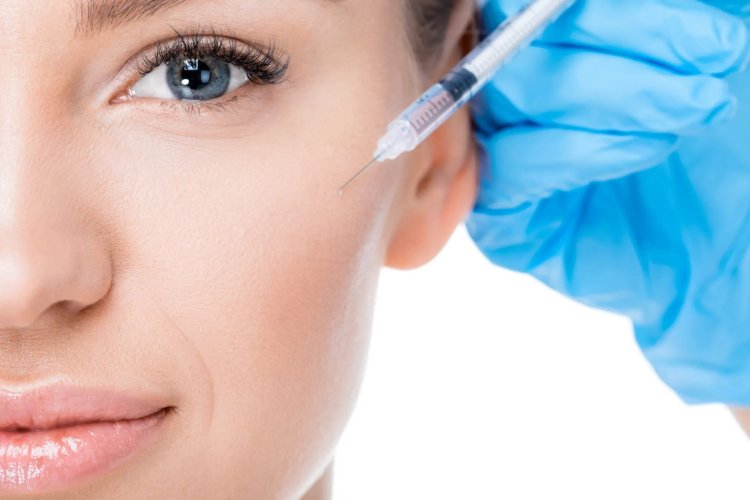Botox Injection Side Effects You Should Know
Share this Post to earn Money ( Upto ₹100 per 1000 Views )

Botox injection has earned its reputation as a safe and effective treatment for fine lines and wrinkles, as well as several medical conditions. While it is a minimally invasive procedure with no surgery or downtime, it’s important to be well-informed about potential side effects. Like any medical treatment, Botox can have temporary reactions or uncommon complications—even when performed by professionals.
In this blog, we’ll walk you through the possible Botox injection side effects, who’s at risk, how to minimize them, and when to seek medical advice. If you're considering Botox or have already booked a session, this information will prepare you for a smooth experience.
Understanding How Botox Works
To understand side effects, it helps to briefly review how Botox injection حقن البوتوكس works. Botox is a purified neurotoxin derived from Clostridium botulinum. When injected into specific muscles, it blocks the nerve signals that cause those muscles to contract. This results in a smoother appearance of the skin above those muscles, reducing wrinkles like crow’s feet, frown lines, and forehead creases.
Because Botox targets nerves and muscles, some side effects are related to how the substance interacts with the body’s nervous system.
Common and Mild Side Effects
Most Botox side effects are mild and temporary. They usually appear within the first few days after treatment and resolve on their own.
Here are the most common ones:
-
Redness or Swelling at the Injection Site
This is the body’s natural response to a needle prick and typically fades within 15 minutes to a few hours. -
Bruising
Small blood vessels may be affected during injection, leading to minor bruises. This is more common in people who take blood-thinning medications or supplements like fish oil or aspirin. -
Mild Headache
Some individuals may experience a slight headache after Botox, especially after forehead or brow injections. This usually resolves within 24–48 hours. -
Temporary Drooping (Ptosis)
In rare cases, Botox may affect nearby muscles, leading to a droopy eyelid or eyebrow. This can last 1–2 weeks but is temporary and correctable with time or medical eye drops. -
Tenderness or Sensitivity
Some patients report mild discomfort or sensitivity in the injected area for a few days. -
Tight or "Heavy" Sensation
A feeling of heaviness in the forehead or eyebrows is occasionally reported, especially after the first treatment. This fades as the body adjusts.
Less Common But Possible Side Effects
Although rare, some people may experience side effects that are a bit more noticeable:
-
Flu-like Symptoms: Fatigue, slight fever, or chills may occur, especially after larger doses.
-
Nausea: A very small percentage of users may feel nauseous temporarily.
-
Allergic Reaction: Extremely rare, but symptoms might include itching, rash, or shortness of breath. Immediate medical attention is needed.
-
Dry Eyes or Excessive Tearing: When Botox is injected near the eyes, it can temporarily affect tear ducts.
-
Uneven Results: If the product is not injected evenly or is metabolized at different rates on each side, slight facial asymmetry may occur—but it is usually correctable.
Factors That Influence Side Effects
Not everyone experiences side effects, and several factors can influence your reaction to Botox:
-
Injector’s skill: Choosing a trained and licensed provider significantly reduces your risk.
-
Dosage and placement: The amount of Botox and the injection sites play a major role.
-
Your medical history: Conditions like neuromuscular disorders (e.g., myasthenia gravis) may increase risk.
-
Medications and supplements: Blood thinners and anti-inflammatories can make bruising more likely.
-
Hydration and lifestyle: Staying hydrated and avoiding alcohol or smoking before treatment helps minimize side effects.
How to Minimize Botox Side Effects
Here are some expert tips to reduce the likelihood of side effects from Botox injection:
-
Avoid alcohol and blood thinners for 24–48 hours before your appointment.
-
Don’t rub or massage the treated area for at least 24 hours post-treatment.
-
Sleep with your head elevated the first night to prevent shifting.
-
Avoid vigorous exercise, saunas, and hot tubs for a full day after your session.
-
Choose an experienced injector who understands facial anatomy thoroughly.
By following pre- and post-treatment instructions, you’re more likely to have a safe and smooth experience.
When to Contact a Professional
Most side effects are minor and resolve without treatment. However, seek medical advice if you experience any of the following:
-
Difficulty breathing or swallowing
-
Severe or prolonged drooping of eyelids or facial muscles
-
Hives, swelling, or signs of allergic reaction
-
Vision changes or eye pain
-
Muscle weakness beyond the injection area
Prompt response to rare reactions ensures quick management and full recovery.
Can Side Effects Be Prevented Entirely?
While there’s no way to guarantee zero side effects, you can significantly reduce your chances by:
-
Working with certified professionals
-
Being honest about your health history
-
Following guidelines before and after your Botox session
Most importantly, make sure your injector is not only medically qualified but also has cosmetic experience. Botox is both a science and an art—achieving natural, balanced results requires skill, not just a license.
Why Botox Remains a Trusted Option
Despite the possibility of mild side effects, Botox injection remains one of the most trusted cosmetic treatments available. Millions of people worldwide have benefited from its ability to:
-
Smooth dynamic wrinkles
-
Prevent deeper lines
-
Enhance facial harmony
-
Provide visible yet natural rejuvenation
When done right, Botox offers impressive results with minimal disruption to your routine.
Conclusion: Stay Informed, Stay Confident
Understanding the potential side effects of Botox empowers you to make confident, informed decisions. Most side effects are minor, temporary, and manageable. With a qualified provider, proper technique, and good aftercare, Botox is a safe, effective path to smoother, younger-looking skin.















